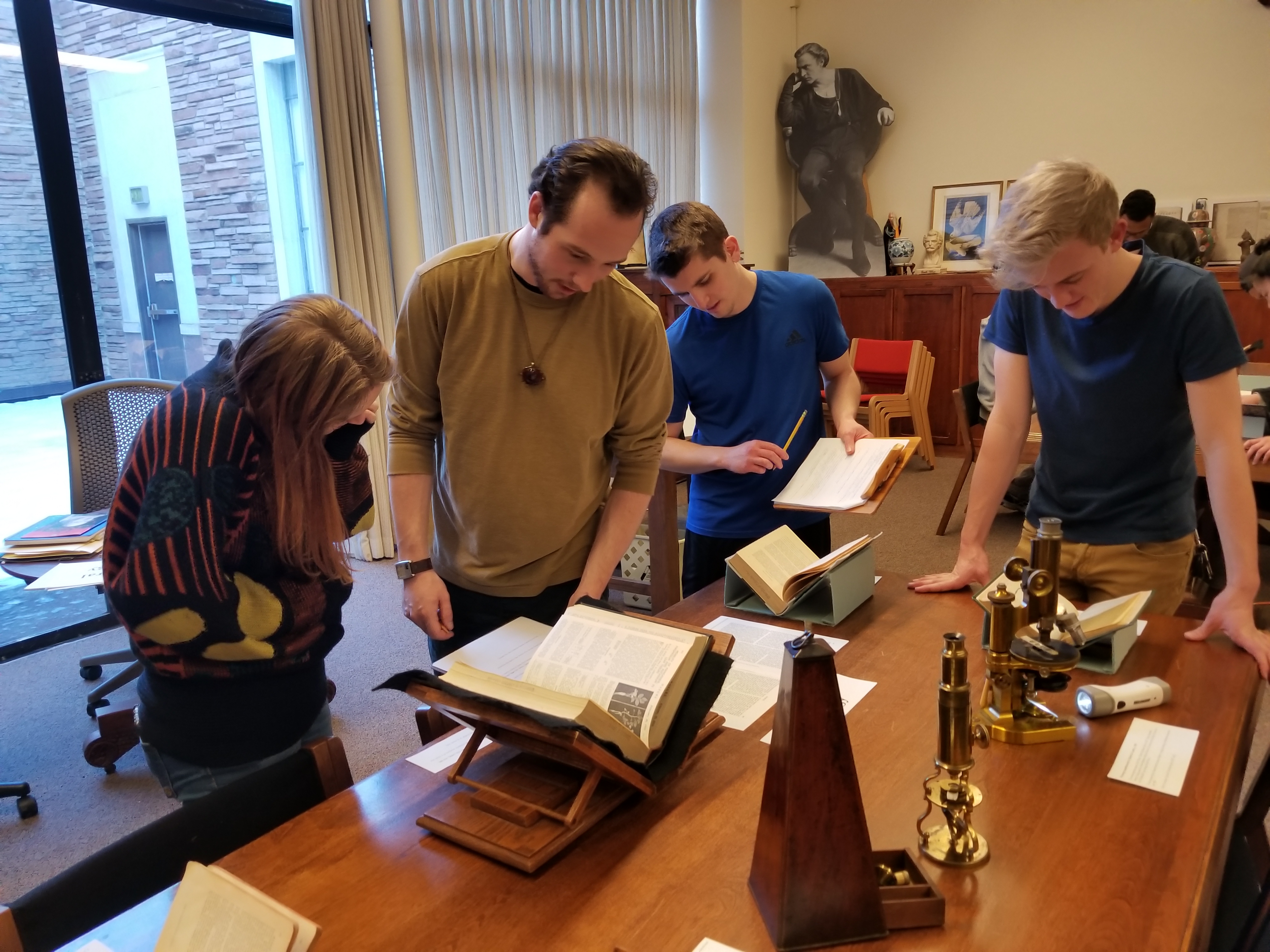
Vision and Change in Undergraduate Biology Education (American Association for the Advancement of Science, 2011) stresses the importance of fostering an understanding of the relationship between science and society. We describe a library-based activity that enables students in an undergraduate microbiology class to explore this relationship over the course of centuries, with the library functioning as a laboratory. Students are guided by a worksheet as they explore historical materials such as books, newspapers, letters, government publications, articles, scientific treatises, and artifacts. Working in pairs, students answer questions about the content and reflect on how the ideas in the documents relate to the scientific understanding at the time. Exploring authentic materials in a library setting provides a powerful learning experience. This activity was also successful using digitized documents during the COVID-19 pandemic, when remote teaching was required. Student responses to a post-activity questionnaire indicated that the activity sparked a keen interest in the history of science as well as introspection about the relationship between science and society. This approach can be generalized for different biology courses and education levels.
Primary image: Students examining historical books and microscopes. Students working in pairs to complete worksheet questions during one of two visits to the University of Colorado Boulder’s Special Collections.